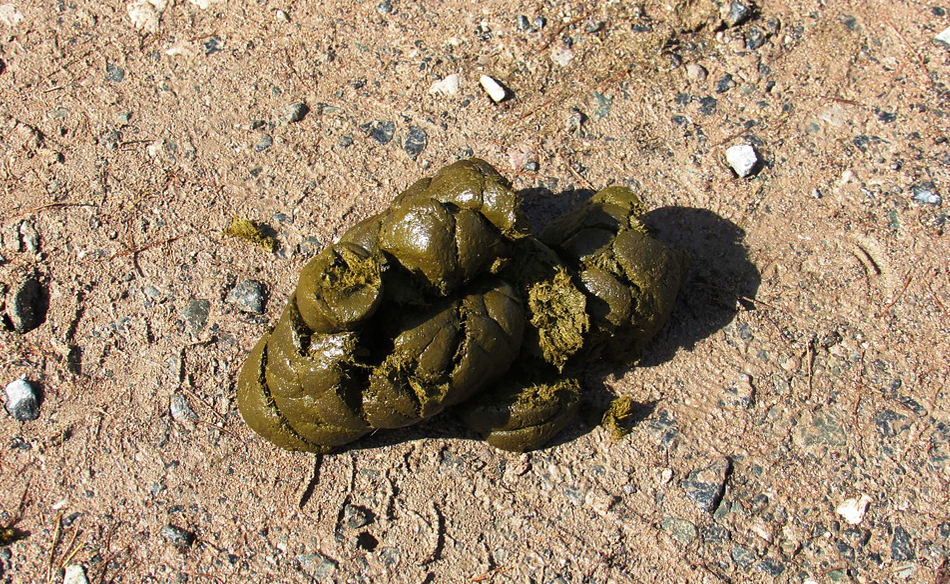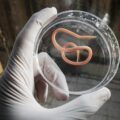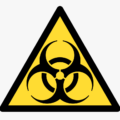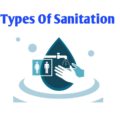
Human waste (or human excreta) refers to the waste products of the human digestive system, menses, and human metabolism including urine and faeces. As part of a sanitation system that is in place, human waste is collected, transported, treated and disposed of or reused by one method or another, depending on the type of toilet being used, ability by the users to pay for services and other factors. Faecal sludge management is used to deal with fecal matter collected in on-site sanitation systems such as pit latrines and septic tanks.
The sanitation systems in place differ vastly across the world, with many people in developing countries having to resort to open defecation where human waste is deposited in the environment, for lack of other options. Improvements in “water, sanitation and hygiene” (WASH) around the world is a key public health issue within international development and is the focus of Sustainable Development Goal People in developed countries tend to use flush toilets where the human waste is mixed with water and transported to sewage treatment plants.
Children’s excreta can be disposed of in diapers and mixed with municipal solid waste. Diapers are also sometimes dumped directly into the environment, leading to public health risks.
Is Feces A Biohazard?
A biological hazard, or biohazard, is a biological substance that poses a threat to the health of living organisms, primarily humans. This could include a sample of a microorganism, virus or toxin that can adversely affect human health. A biohazard could also be a substance harmful to other animals.
The Centers for Disease Control identifies four levels of biohazard waste:
- Biohazard Level I: any agent that has the potential to pose even minimal threats to humans or the environment. A prime example is E. coli.
- Biohazard Level II: an agent that may cause severe illness in a human such as one that is transmitted through direct contact with infected materials. Primary examples of this level include hepatitis B, HIV, or Salmonella.
- Biohazard Level III: any pathogen that has the potential to become airborne and cause severe illness or disease. An example of this level of biohazard includes tuberculosis.
- Biohazard Level IV: a pathogen that has an extremely high risk of producing life-threatening disease for which there is no treatment. One of the most well-known today includes the Ebola virus.
Know how to handle different types of biohazardous waste including solid, liquid, and microbiological infectious waste for the occupational safety and health of employees, coworkers, patients, and the general public.
Is Feces Biohazard Waste?
In the strictest sense feces without blood is NOT considered or regulated as a biohazardous waste. However once contaminated with blood or any other body fluid that can not be identified, feces and urine will be considered or regulated as biohazardous waste.
Human excreta and the lack of adequate personal and domestic hygiene have been implicated in the transmission of many infectious diseases including cholera, typhoid, hepatitis, polio, cryptosporidiosis, ascariasis, and schistosomiasis. The World Health Organization (WHO) estimates some 827 000 people in low- and middle-income countries die as a result of inadequate water, sanitation, and hygiene each year. Poor sanitation is believed to be the main cause in some 432 000 of these deaths. Around 10% of the population of the developing world are severely infected with intestinal worms related to improper waste and excreta management. ALSO SEE: Is Vomit Biohazard Waste
Human excreta-transmitted diseases predominantly affect children and the poor. Most of the deaths due to diarrhoea occur in children and in developing countrie, Proper excreta disposal and minimum levels of personal and domestic hygiene are essential for protecting public health. Safe excreta disposal and handling act as the primary barrier for preventing excreted pathogens from entering the environment. Once pathogens have been introduced into the environment they can be transmitted via either the mouth (e.g. through drinking contaminated water or eating contaminated vegetables/food) or the skin (as in the case of the hookworms and schistosomes), although in many cases adequate personal and domestic hygiene can reduce such transmission.
Excreta and wastewater generally contain high concentrations of excreted pathogens, especially in countries where diarrhoeal diseases and intestinal parasites are particularly prevalent. Therefore for maximum health protection, it is important to treat and contain human excreta as close to the source as possible before it gets introduced into the environment. Although the principal focus of the guideline documents examined in this book is water, in many settings other disease transmission pathways are at least as important. In microbiological terms, the traditional approach of examining each guideline area in isolation ignores the inter-related pathways and also the root of the problem, namely excreta and inadequate hygiene. Read More on Roundworms Are What Type Of Biohazard?




